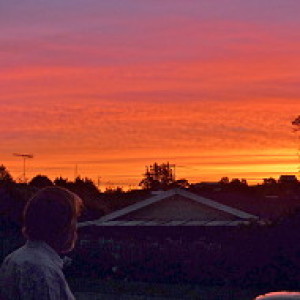Te Rewa Rewa Bridge
Equinoctial weather is here. Thursday was bucketing down almost all day. Yesterday was brilliantly sunny. Rain over night woke me a couple of times. When I woke properly, it was not raining, although very overcast so I set out to run along the Coastal Walkway to the Te Rewa Rewa Bridge.
I took this photo looking through the arch to the northern bank of the Waiwhakaiho River. Felt pleased with it and ran back to the new accommodation. Since then I have been intermittently busy as the on call doctor for the service. So I have just now done some reading about the bridge; finding the following:
The Te Rewa Rewa Bridge is a pedestrian and cycle bridge over the Waiwhakaiho River, just north of the city of New Plymouth, and about 500 m from the mouth of the river into the Tasman Sea. It was built between 2008 and 2010, opening on 05 June 2010. It is a steel arch bridge with a concrete deck, having an overall length of 70 m. It is 10 m high at the highest point, and 2.5 m wide. It is a single span bridge, which clears the river below by 4.5 m.
The northern bank of the Waiwhakaiho River is the site of an historic pa, which was the site of a major battle during the Musket Wars, fought between different Maori tribes in the period 1807 -1845, after Maori had gained access to muskets from the settlers. The site then became a burial ground (Rewa Rewa). Building the bridge was made possible by a special agreement between the Ngati Tawhirikura hapu (sub-tribe), and the New Plymouth District Council.
The designer of the bridge, Peter Mulqueen, is quoted as saying that he understood that the bridge was to “touch lightly” on the northern side in order to honour the dead, this ruling out heavier designs. His design was aimed to achieve a “harmonious and dignified character”. The design and construction won a number of awards, including internationally during 2011.
Something I did not see this morning, due to the heavy cloud cover and the showery conditions, was that from the Rewa Rewa side of the bridge, the sacred mountain (Taranaki) is seen framed within the skewed arch. Today, Taranaki was completely shrouded from view. Another time, on a sunny day….

Comments
Sign in or get an account to comment.


